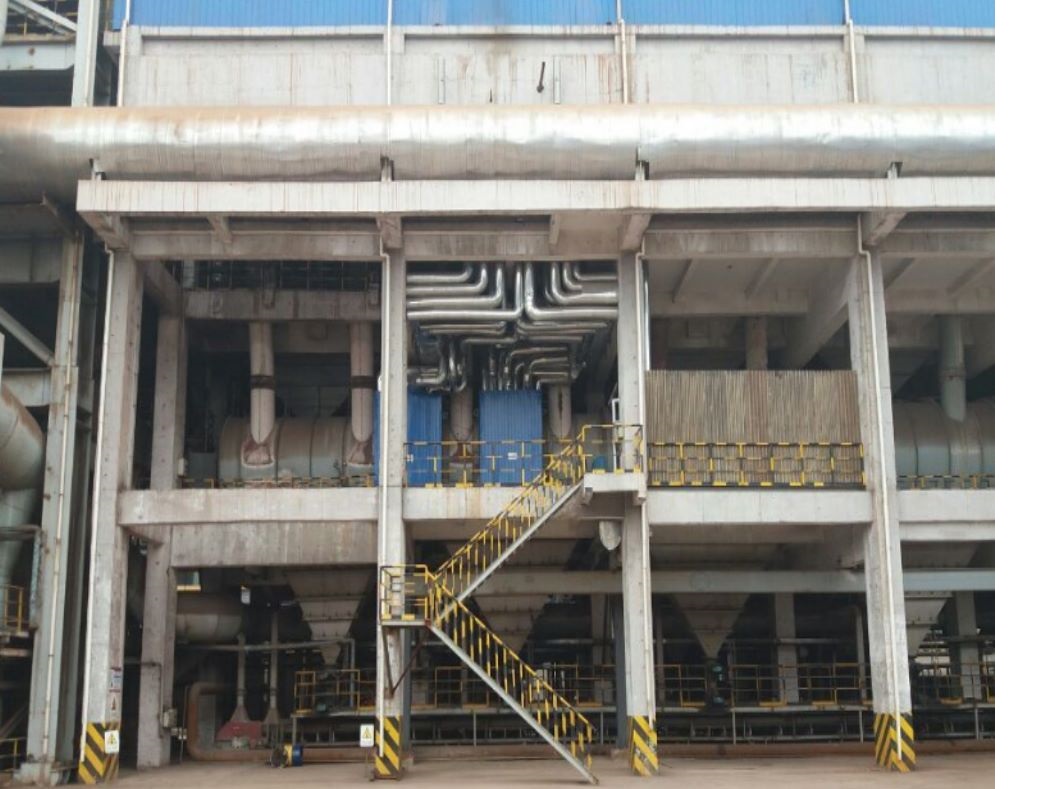High-Temperature Section Flue Gas Waste Heat Recovery Technology for Sintering Large Flue

I. Current Status of Waste Heat Recovery from the High-Temperature Section of Sintering Large Flue
As a key pillar of the national economy, iron and steel metallurgical enterprises have a high proportion of energy consumption in product costs and have an urgent need for energy-saving and consumption reduction. The sintering process is a high-energy-consuming part of iron and steel production, with energy consumption second only to the iron-making process. Among these, the waste heat from the exhaust gas of the ring cooler accounts for 20% to 28% of the total energy consumption, while the waste heat resources from the high-temperature section flue gas of the sintering large flue (with an average temperature of 380–420 °C) account for 49% of the total heat energy, indicating a huge potential for recovery.
Currently, waste heat recovery technologies are mainly focused on the sensible heat of the ring cooler exhaust gas. However, there is still a significant gap in the recovery of waste heat from the high-temperature section of the sintering large flue. Most domestic and international iron and steel enterprises have not yet effectively recovered the high-temperature flue gas from the sintering large flue. Only some domestic enterprises have attempted to use traditional external waste heat recovery devices. Nevertheless, these devices have significant shortcomings:
Low recovery efficiency: The external design leads to substantial heat dissipation losses and insufficient actual heat recovery.
Poor cost-effectiveness: Additional bypass flues, valves, and steel structures are required, resulting in high material and installation costs and excessive space occupation.
These issues have led to extremely low recovery rates of high-temperature waste gas from sintering large flues, with a large amount of waste heat resources being wasted. If this waste heat can be utilized, the heat recovery per ton of ore can be increased by 30–40 kg of steam.
II. Our Solutions
In response to the pain points of traditional waste heat recovery technologies, our company introduces an internal waste heat recovery technology for sintering large flues. Through innovative design and engineering optimization, this technology achieves efficient recovery and stable operation. The specific solutions and advantages are as follows:
1. Integrated Internal Design — Cost-effectiveness and Convenience
Solution: Directly embed the waste heat recovery device into the sintering large flue to directly recover the heat from the high-temperature waste gas, eliminating the complex flue system of external devices.
Advantages:
Cost saving: Reduces material investment for bypass flues, valves, and steel structures, lowering investment costs by over 20%.
Space efficiency: No additional space is required, making it suitable for retrofit scenarios with space constraints.
2. Patent Anti-Wear Technology — Reliability and Long Service Life
Solution:This system adopts a unique wear-resistant structural design that isolates flue gas particulates from direct contact with heat exchange tubes, combined with an automatic ash cleaning function.
Advantages:
Wear resistance: Extends equipment life by 50%, avoiding unplanned shutdowns.
Low maintenance: Shortens maintenance cycles by 40%, catering to continuous production needs.
3. Modular Configuration — Rapid Installation and Production Compatibility
Solution: The equipment uses a standardized modular design, enabling quick connection with existing flues.
Advantages:
Seamless retrofitting: Reduces sintering machine downtime during retrofitting to within 10 days.
Zero interference: No adjustment to existing processes is needed, ensuring continuous production.
4. Efficient Heat Transfer and Low Resistance Optimization — Technical Performance Enhancement
Solution: Through compact flow channel design and enhanced heat transfer surfaces, the heat exchange efficiency is improved.
Advantages:
Efficient recovery: Heat recovery rate is increased to over 85%, with heat dissipation losses reduced by 20%.
Stable operation: Flue gas resistance is reduced by 15%, ensuring stable operation of the main exhaust fan.
5. Economic Benefits
The investment payback period is approximately one year.
III. Summary
This solution, with technological innovation at its core, systematically addresses the issues of cost-effectiveness, reliability, compatibility, and efficiency in traditional technologies through integrated internal design, anti-wear design, modular configuration, and heat transfer optimization. It provides iron and steel enterprises with a waste heat recovery solution that offers both energy-saving benefits and production stability.